Content
Many vegetable growers try to grow only familiar and proven varieties of domestic selection. And some farmers who like to experiment choose new products from foreign selection. Japanese scientists from the company Sakata have developed a medium-ripening tomato variety, Pink Paradise. It belongs to a variety of hybrids, so the correct name of the variety is written with the letter F1. In the article we will pay attention to the description of the Pink Paradise tomato variety, reviews from vegetable growers and look at photos of the fruits and the plant itself.
Features of the popular hybrid
The bulk of tomato hybrids are intended for growing under cover. This can be any greenhouse or greenhouse, built with your own hands or purchased ready-made. The thing is that in open ground, according to reviews from vegetable growers, the Pink Paradise F1 tomato variety requires very careful compliance with all care points. Otherwise, it is almost impossible to obtain a fruit crop with the required characteristics.
One more nuance. Collecting seeds of hybrid tomato varieties is not recommended. Therefore, this requirement also applies to Pink Paradise F1 hybrid tomato seeds. In the second year of cultivation, you will receive fruits that are completely devoid of the varietal parental characteristics of the Pink Paradise F1 tomato.
It is necessary to note one more feature of the variety, on which the list of necessary care items for Pink Paradise f1 hybrid tomatoes depends. The plant belongs to the indeterminate species. This means that it will grow throughout the growing season. Mature tomato bushes Pink Paradise f1 reach a height of 2 meters or more, so they need a garter. In a greenhouse, it is also necessary to take into account the size of the room so that the plants do not interfere with each other.
general description
When choosing tomato varieties for planting, summer residents are guided by the description, so Pink Paradise is no exception. A vegetable grower needs to know the external characteristics of the variety, yield, and requirements for growing conditions. In addition to the description, reviews of Pink Paradise tomatoes help a lot.
The indeterminate hybrid is grown in greenhouses with the formation of one or two stems. The yield of the Pink Paradise tomato depends on the method of formation. If you form a bush with two stems, you will have to feast on ripe fruits a couple of weeks later, but their quantity will be greater. A high-yielding hybrid allows you to get up to 4 kg of tasty tomatoes from one bush.
In open ground, the characteristics of the Pink (pink) Paradise tomato variety change slightly. The height of the bushes reaches 120 cm, after which the plant is pinched. If this is not done, then not all fruits set will reach full maturity. Productivity is also decreasing. This is due to the hybrid’s demanding growing conditions. But in open ground it is more difficult to protect plants from unfavorable factors.
The hybrid has green leaves, regular shape and medium size. The inflorescences are simple, the first one begins above the 6th pair of leaves. According to reviews, the Pink Paradise f1 tomato is very decorative, which is confirmed by the photo of the bush.
The fruits of Pink Paradise tomatoes are pink in color, flat-round in shape with smooth sides, which is clearly visible in the photo. The tomatoes are uniform in size, so housewives love to use this variety for canning.
According to vegetable growers, Pink Paradise hybrid tomatoes have excellent taste. They are quite dense and large, and have an excellent tomato aroma. Salads made from fresh fruits are very original.
It is important that the density of Pink Paradise tomatoes allows them to be transported over long distances and stored for a long time. And this despite the fact that the skin of the fruit is quite delicate.
Now it’s worth moving on to the agrotechnical characteristics and description of the mid-season tomato variety Pink (pink) Paradise.
Medium-ripening hybrids are grown only by seedlings. This allows you to get the harvest on time, even under unfavorable climatic conditions.
Indeterminate mid-season varieties necessarily form and take stepson. Otherwise, the grown stepsons will turn into stems and reduce the yield.
According to reviews from summer residents, the tomatoes of the Pink Paradise f1 variety ripen well if you pinch the tops of the bushes in August and cut off all the leaves.
Collecting not only ripe fruits, but also unripe ones, will help save the harvest of a mid-season hybrid from late blight. The main thing is that they gain the required weight. Small ones can not be collected yet.
Let's now move on to tips on how to grow Pink (pink) Paradise tomato so that the result is decent.
Nuances of seedling agricultural technology
Tomato seeds of this variety should be sown taking into account the period of fruit ripening. In this hybrid, seed growth begins at an ambient temperature of at least 12°C, and the optimal value is 22°C -25°C.In this case, sufficient lighting is a prerequisite, because tomato is a light-loving crop.
Sowing time is calculated based on the place where the hybrid is grown - open ground or greenhouse.
Another parameter is the age of seedlings when planted in a permanent place and germination time. It remains to take into account the characteristics of the region in which the tomatoes will grow.
Using simple calculations, for planting seedlings in a greenhouse from May 1 to May 14, the seeds must be sown no later than March 8. We check the lunar calendar and select the sowing date.
According to reviews, the seeds of Pink (pink) Paradise hybrid tomatoes have good germination, as evidenced by photos of seedlings.
They are sown in a sterile container filled with prepared soil. The soil mixture is mixed, heated, and disinfected. The seeds are placed in the grooves to a depth of no more than 1 cm. The placement pattern is 2 cm between seeds, 10 cm between rows. Cover with soil, moisten with a spray bottle and cover with film.
After the seedlings emerge, the film is removed and the boxes are moved closer to the light so that the seedlings do not stretch out.
Caring for seedlings involves following the main points:
- Watering. Tomato seedlings should not be watered frequently to avoid the spread of fungal infections. It is important that the soil does not dry out.
- Nutrition. Only weakened seedlings need to be fed.
- Diving is done when the seedlings are no older than 12-14 days. After the procedure, feed with a weak solution of complete complex fertilizer.
- Hardening is a mandatory procedure for seedlings.In order for the plants to tolerate subsequent transplantation well, they need to be prepared.
Additionally, preventive treatment of seedlings against the invasion of pests and diseases is carried out. Pollination with wood ash serves as both nutrition and prevention of blackleg.
Caring for mature bushes
Hybrid seedlings are planted so that there is enough space between the bushes. The plants are powerful and tall; it is necessary that they do not interfere with each other in the greenhouse. For open ground, you can leave the scheme 40 cm x 60 cm.
They begin to feed the bushes of the hybrid variety a week after transplantation.
The first diet should be nitrogen, then switch to phosphorus-potassium. This is necessary during the period of setting and ripening of tomatoes.
When growing in a greenhouse, summer residents advise moving the stems or tapping on them when the bushes are flowering. This improves the pollination process.
In open ground, late blight requires treatment with systemic fungicides, especially in rainy weather. They need to be repeated after 14 days, but do not forget to stop 2 weeks before the start of harvest.
The variety does not cause any particular problems with diseases. The hybrid is resistant to Verticillium and Fusarium wilt, cladosporiosis, TMV, brown spot and root nematode. Therefore, with good care, many treatments can be completely avoided.
The harvested crop is well stored, so the taste of tomatoes will delight your family for a long time.
After reading the material, it is useful to watch a video on the topic and read the reviews:
Reviews
Conclusion
All this information - photos, reviews and descriptions of the variety will help you grow a decent crop of Pink Paradise tomatoes on your plot.




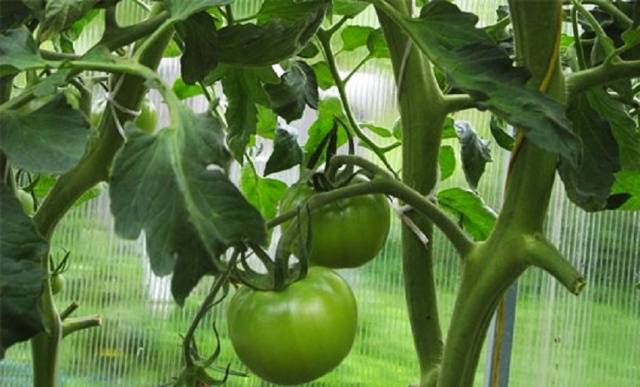

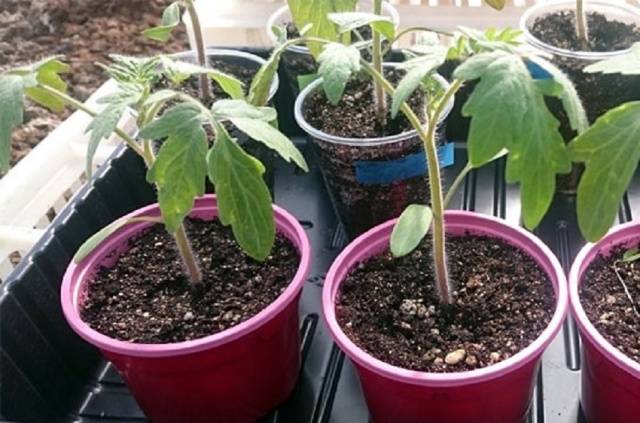

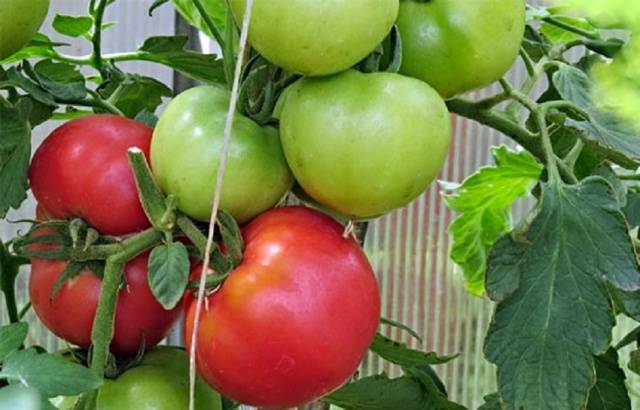

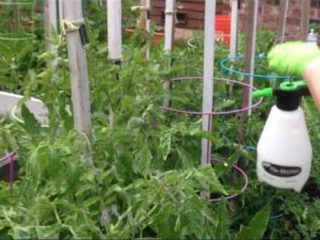



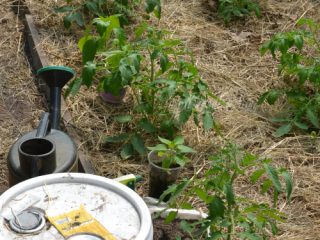



Urgently sowing a tomato in the summer for the second turn, how will it bear fruit because it’s hot in August